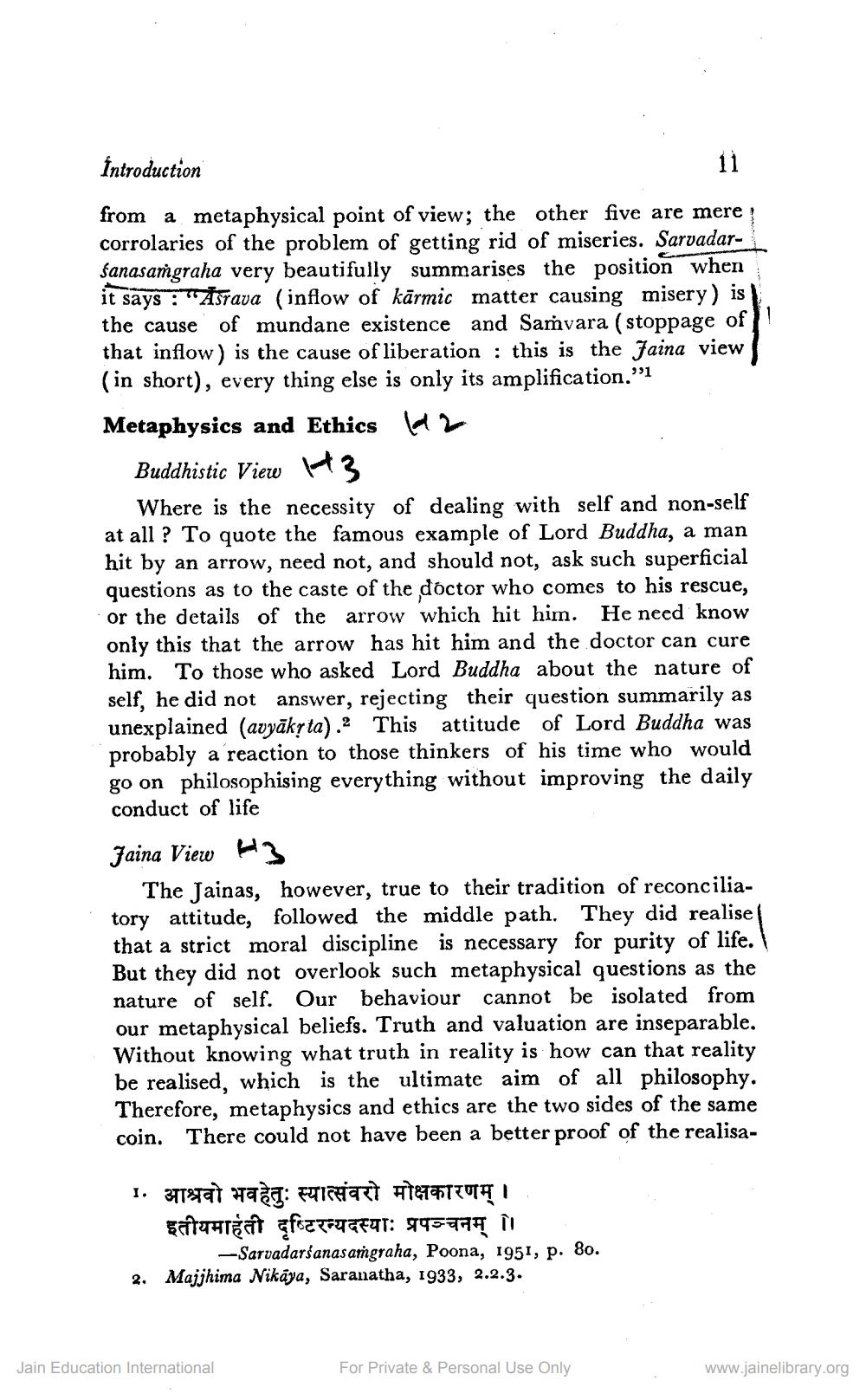________________
Introduction from a metaphysical point of view; the other five are mere corrolaries of the problem of getting rid of miseries. Sarvadarsanasamgraha very beautifully summarises the position when it says : "Ăstava (inflow of kārmic matter causing misery) is the cause of mundane existence and Saṁvara (stoppage of that inflow) is the cause of liberation : this is the faina view (in short), every thing else is only its amplification.” Metaphysics and Ethics ld 2
Buddhistic View H 3
Where is the necessity of dealing with self and non-self at all? To quote the famous example of Lord Buddha, a man hit by an arrow, need not, and should not, ask such superficial questions as to the caste of the doctor who comes to his rescue, or the details of the arrow which hit him. He need know only this that the arrow has hit him and the doctor can cure him. To those who asked Lord Buddha about the nature of self, he did not answer, rejecting their question summarily as unexplained (avyākyta).2 This attitude of Lord Buddha was probably a reaction to those thinkers of his time who would go on philosophising everything without improving the daily conduct of life Jaina View H3
The Jainas, however, true to their tradition of reconciliatory attitude, followed the middle path. They did realise that a strict moral discipline is necessary for purity of life. But they did not overlook such metaphysical questions as the nature of self. Our behaviour cannot be isolated from our metaphysical beliefs. Truth and valuation are inseparable. Without knowing what truth in reality is how can that reality be realised, which is the ultimate aim of all philosophy. Therefore, metaphysics and ethics are the two sides of the same coin. There could not have been a better proof of the realisa
1. 371771 HTT: FICHERT 187ATTUTEL इतीयमाहती दृष्टिरन्यदस्याः प्रपञ्चनम् ।।
--Sarvadarśanasamgraha, Poona, 1951, p. 80. 2. Majjhima Nikaya, Saranatha, 1933, 2.2.3.
Jain Education International
For Private & Personal Use Only
www.jainelibrary.org




